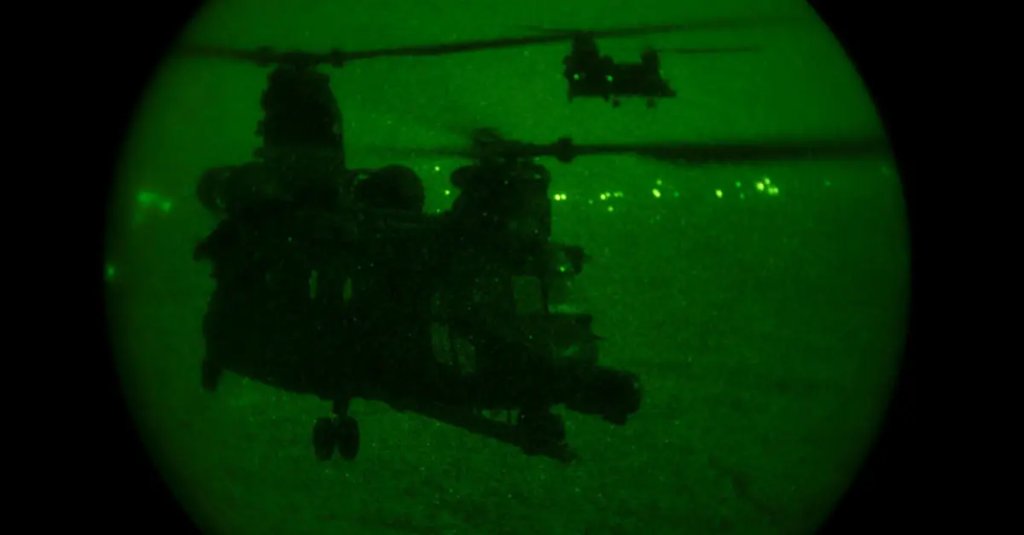Some know them as Task Force Brown, others fear them as thunderous ghosts who approach in the darkest hours of the night. To the public, they’re the 160th Special Operations Aviation Regiment (SOAR), but to the US Army and the special operations community, they’re known only as the legendary Night Stalkers.
Their motto, “Death Waits in The Dark,” tells you all you need to know. The Night Stalkers operate after sunset, flying through the blackness in some of the craziest scenarios and environments known to man. These are the best and most highly trained pilots the Army has to offer, undergoing months upon months of rigorous training until they are fully mission-qualified.
When the 160th deems its newest pilots and crew ready, Night Stalkers get sent on top-secret missions all across the world, from the deserts of the Middle East to the jungles of tropical Asia and everywhere in between, supporting American special operations units. Because of the nature of their missions, Night Stalkers rely on their helicopters to function well, even in extreme conditions.
These are the four helos they operate: unique, kitted out, and highly unlike any other in the US military today.
The Night Stalkers love the MH-60LM Black Hawk

The Black Hawk is the backbone of Army Aviation, having replaced the Huey in 1980s as the Army’s go-to medium lift utility helo. Highly adaptable, rugged, and dependable, it’s no surprise that the 160th would choose this aircraft as the core of their fleet.
Known as the MH-60 to Night Stalkers, these helos are refitted with a sensor suite, high-tech communications gear, a refueling probe for longer missions, forward-looking infrared radar systems, and terrain-following radars among a few other things. They can also be converted to an up-gunned attack variant as needed.
During the 2011 raid on Abbottabad, Pakistan, which saw the death of Osama bin Laden, Night Stalkers used a “stealthed out” version of the MH-60, fitted with a radar-defeating shell and other bells and whistles.
MH-60L Direct Action Penetrator

The Night Stalkers don’t fly the Army’s legendary gunship, the AH-64D/E Apache. Instead, they fly something just as fearsome, but slightly more versatile. Known as the Direct Action Penetator (or DAP), it’s been a staple of 160th missions worldwide since the early ’90s.
According to former Night Stalker CW4 Michael Durant (and recounted in his book, In the Company of Heroes), the DAP was developed in-house by the 160th using existing Black Hawks. After adding removable wing stubs to the sides of the helo and setting up a firing link to the cockpit, Night Stalkers managed to turn the MH-60 into a gunship.
The DAP comes with the ability to field Hydra rocket pods, Hellfire and Stinger missiles, 30 mm M230 chain guns (the same used by the Apache), and .50 caliber Gatling gun pods for some serious shock and awe. Unlike the Apache, the DAP has a refueling probe, giving it greater endurance and range.
Any MH-60 can be converted into a DAP using the kits created by the 160th, but it loses its ability to carry troops upon conversion.
MH-47G Chinook is one of the Night Stalkers’ favorites

The mighty Chinook heavy-lift helo has served Army Aviation well from Vietnam to Afghanistan and beyond. Because of its ability to carry tons of cargo, fly longer missions, and survive in austere conditions, the Chinook was one of the first aircraft inducted into Night Stalker service in the 1980s.
When the 160th first got its hands on CH-47s, they added a refueling probe, a fast-rope system for troop insertion, and a host of other features to bring them up to operational standards. Dubbed the MH-47D, these beasts were put to work right away. In a testament to the Chinook’s durability and heavy-lift capabilities, the 160th even used these tandem-rotor helos to “steal” a large, abandoned Libyan attack helicopter in the late ’80s during a sandstorm.
MH/AH-6M Little Bird

There’s a popular saying in the special operations community: “Six guns don’t miss.” This has nothing to do with revolvers and everything to do with the Night Stalkers’ Little Birds, sometimes referred to as “Killer Eggs” because of their shape. While the MH-6 is typically outfitted with outboard bench seats on either side of the aircraft for troop carriage, the AH-6 instead carries miniguns, rocket pods, and missiles.
The first Little Birds to enter service with the 160th were actually OH-6A Cayuses, small helos that were already on their way out of the Army and National Guard by the time SOAR was created. Because of their size, agility, and ability to be quickly disassembled and reassembled, these small aircraft were considered ideal for urban operations in tight spaces. From the early 1980s onward, the 160th has used the Little Bird in nearly every major conflict.


